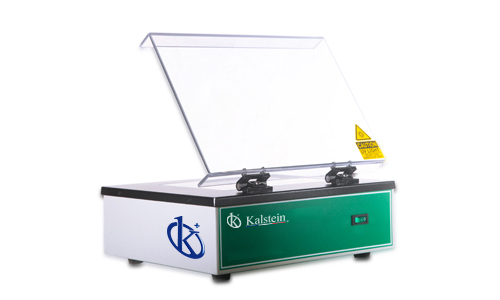The transilluminator is an essential tool in a modern laboratory. This device is essential for visualizing DNA or RNA fragments, allowing scientists to accurately identify these sequences. It increases the brightness and clarity of these elements, making detailed analysis possible. However, inappropriate use can result not only in experimental inaccuracies but also in potential safety risks.
Therefore, it is vital for any scientist to learn how to properly operate this tool. Safe and effective operation of the transilluminator requires not only understanding its operation, but also adopting proper safety precautions. With responsible handling, this laboratory tool can be a valuable ally for any scientist.
Transilluminator Safety First
Handling a transilluminator involves exposure to ultraviolet (UV) radiation, which in high doses is harmful to the skin and eyes. Therefore, certain safety precautions are essential when using it. Due to the risk of eye and skin damage, the use of personal protective equipment is important. This includes gloves, lab coats and, most importantly, safety glasses that protect against UV radiation.
By using these items, direct exposure to ultraviolet light is minimized, thus ensuring operator safety. In addition, it is essential to turn on the transilluminator only when necessary to avoid unnecessary exposure to ultraviolet radiation. This not only protects the operator but also the lifetime of the laboratory tool. In addition, it is essential to use this equipment in a properly ventilated space to avoid overheating and technical problems that could interfere with experiments.
Correct Transilluminator Operation
Correct operation of the transilluminator is essential to ensure not only operator safety but also experimental accuracy. First, it is necessary to place the gel correctly in the viewing area. This involves making sure that the gel is correctly exposed to the UV light and that the image is optimally projected.
After placing the gel, the intensity of the ultraviolet light must be adjusted. This should be high enough to provide a clear image but not so high as to damage the gel or jeopardize the safety of the operator. Finally, image capture must be done efficiently and accurately. The correct use of image capture software together with a suitable camera will allow high resolution images to be obtained that can be subsequently analyzed.
In conclusion, as a manufacturer of laboratory equipment, we at Kalstein are pleased to offer high-end products, with updated design and advanced technology; know our transilluminators HERE, you will find the YR models that are available for purchase, we also have a new 3D platform that has unlimited versatility, present in over thirty countries worldwide, publish with us without language restrictions, with shipping plans, be seen, you are more.

